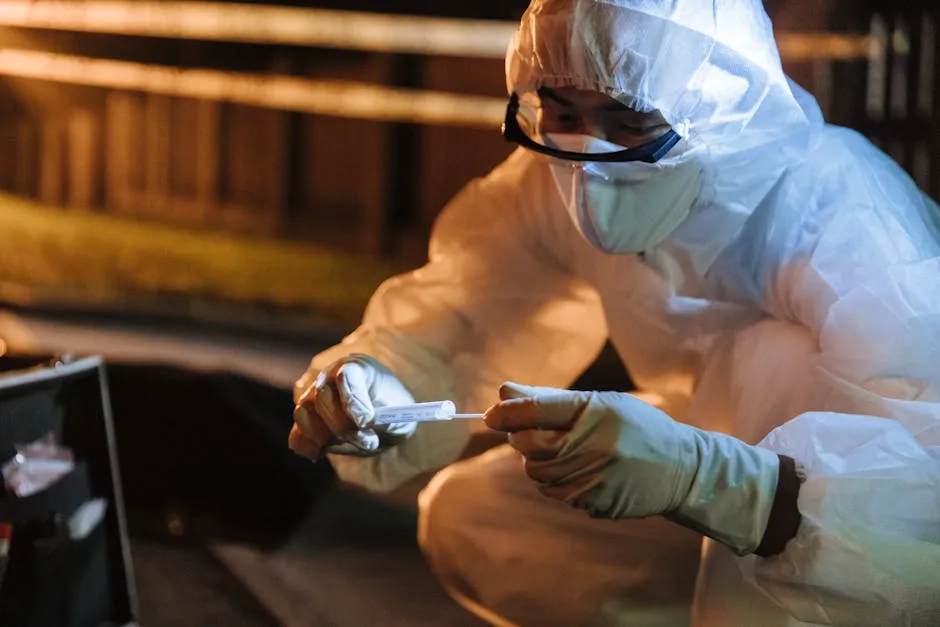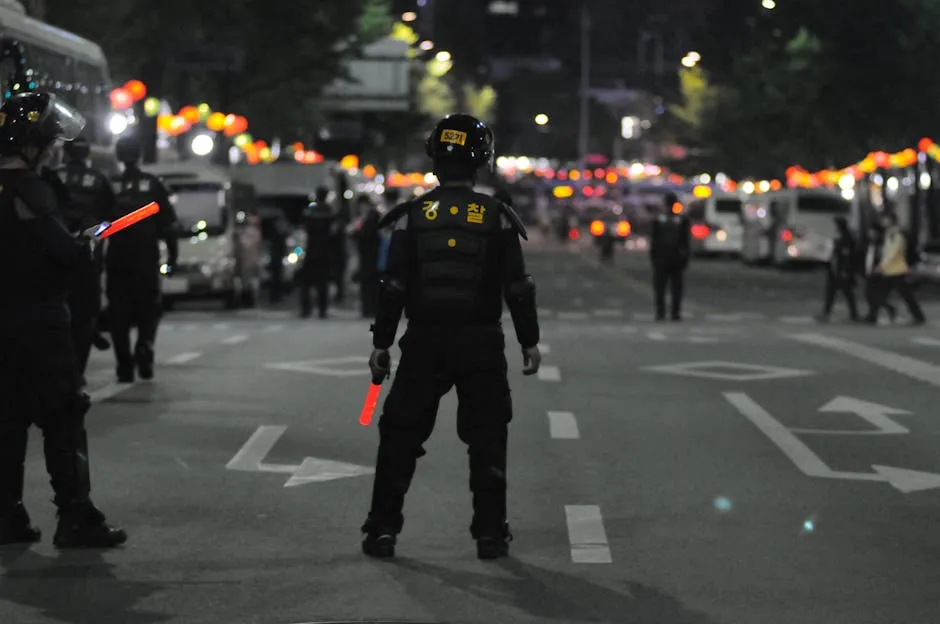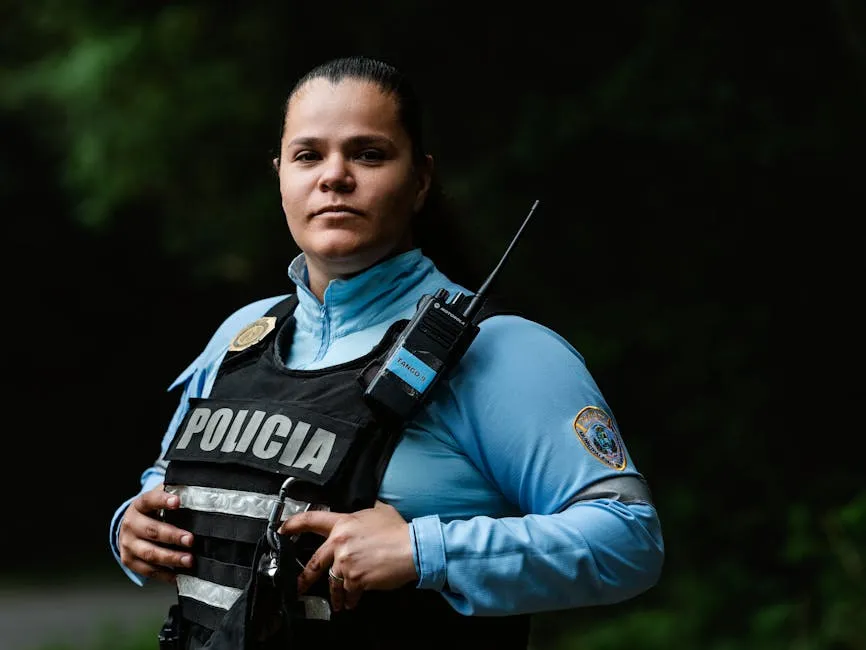Introduction
When it comes to understanding Brooklyn, NY, crime statistics paint a telling picture. This vibrant borough, with its rich culture and diverse communities, is not without its challenges. Crime rates are crucial for various stakeholders, including residents, potential movers, and policymakers. Knowing the safety landscape can shape decisions about living, working, or visiting here.
Residents need to gauge the safety of their neighborhoods. For potential movers, these statistics can reveal where to settle down or avoid. Policymakers use this data to allocate resources and develop effective crime prevention strategies. Speaking of which, if you want to be proactive about your safety, consider investing in a Personal Safety Alarm. It’s a simple yet effective device that can alert others in case of an emergency—because who doesn’t want a little peace of mind?
The data presented here comes from reputable sources, including the NYPD and the FBI. This information is meticulously collected, reflecting the state of crime in Brooklyn during the calendar year 2022, released in late 2023. By analyzing this data, we can uncover trends, types of crimes, and variations across neighborhoods.
As we embark on this exploration of Brooklyn’s crime landscape, expect to encounter a blend of statistics, anecdotes, and insights. Whether you’re a long-time resident or considering a move, understanding these crime statistics will empower you to navigate Brooklyn with confidence.
Understanding Brooklyn’s Crime Landscape
Overview of Crime in Brooklyn
Brooklyn’s crime climate is a tale of contrasts. With an overall crime rate of 27 crimes per 1,000 residents, it surpasses 93% of cities in New York State. The violent crime rate stands at 6.86 per 1,000 residents, while property crime is notably higher at 19.96 per 1,000 residents.
These figures indicate that residents face a 1 in 37 chance of becoming a victim of any crime. In comparison, the national averages reveal that Brooklyn’s crime rates are above the general U.S. statistics. For instance, the violent crime rate nationally averages around 4.0 per 1,000 residents, making Brooklyn’s situation more pressing. To combat this, many people are turning to Home Security Camera Systems. Not only do they provide real-time surveillance, but they also help deter potential intruders!
Understanding these statistics is vital for both residents and visitors. High crime rates can affect local businesses and tourism, while lower rates may enhance community engagement and development.
Brooklyn’s neighborhoods vary significantly in crime levels, with some areas experiencing higher crime rates than others. This disparity is crucial for anyone looking to move or visit, as safety can greatly depend on the specific location within the borough.
Overall, Brooklyn’s crime statistics reveal a complex landscape. While some neighborhoods may grapple with higher crime, others thrive in relative safety. As we continue to break down these statistics, we’ll uncover more details and provide insights into the borough’s various neighborhoods.

Methodology of Crime Data Collection
Gathering crime data in Brooklyn involves a collaborative effort between the New York City Police Department (NYPD) and the Federal Bureau of Investigation (FBI). The NYPD records crime statistics from various precincts throughout the borough. They categorize offenses into different types, such as felonies and misdemeanors. This data is then aggregated and reported to the FBI, which maintains a comprehensive database of crime across the nation.
However, the process isn’t without challenges. Reporting can be inconsistent due to various reasons, such as underreporting or misclassification of crimes. Some incidents may not be reported at all. These discrepancies can lead to inaccuracies in the statistics, making it challenging to get a precise picture of crime trends. If you want to be prepared, consider having an Emergency First Aid Kit handy. You never know when a little scrape or a more serious injury might occur!
The data we’re analyzing reflects the 2022 calendar year, which was released in late 2023. This time frame is crucial as it allows for a timely understanding of current crime trends and patterns in Brooklyn. By using the most recent and reliable data, we can better interpret the crime landscape and its implications for residents and visitors alike.

Detailed Crime Breakdown
Violent Crimes in Brooklyn
In 2022, Brooklyn recorded a total of 18,760 violent crimes. This number translates into a violent crime rate of approximately 6.86 per 1,000 residents. Among these, the breakdown includes:
- Murder: The number of reported homicides remains critical, though specific totals may vary yearly.
- Rape: Reported incidents of rape show fluctuations, often influenced by changes in community awareness and reporting practices.
- Robbery: This theft category saw notable increases in certain neighborhoods, highlighting areas of concern.
- Assault: Assaults account for a significant portion of violent crimes, emphasizing the need for community safety measures. To enhance personal safety, consider a Pepper Spray. It’s a compact and effective way to defend yourself!
Trends over the past few years reveal a mixed picture. For instance, while some neighborhoods experienced spikes in robbery incidents, others reported declines in overall violence. Neighborhood-specific data showcases the variations across Brooklyn. Areas like Bushwick and Brownsville frequently rank among the highest in violent crime rates, while neighborhoods like Park Slope and Brooklyn Heights tend to be safer.
In recent years, the data indicates that violent crime rates can surge during specific periods, such as weekends or holidays. Understanding these patterns helps law enforcement and community organizations implement targeted interventions.

Property Crimes in Brooklyn
When it comes to property crimes, Brooklyn reported a staggering 54,615 incidents in 2022, leading to a property crime rate of 19.96 per 1,000 residents. The types of property crimes include:
- Burglary: Properties being unlawfully entered remains a concern, especially in certain high-risk neighborhoods. If you want to deter burglars, a Smart Door Lock is a great investment!
- Theft: Larceny-theft is prevalent, with many residents expressing concerns about leaving personal belongings unattended.
- Motor Vehicle Theft: Car thefts have shown an upward trend, particularly in densely populated areas.
Analyzing trends reveals that property crime rates can vary significantly across neighborhoods. For example, areas with higher foot traffic, such as shopping districts, often see more thefts. Conversely, family-oriented neighborhoods may experience lower incidents due to strong community ties and vigilance.
High-crime areas, including parts of East Brooklyn, have prompted community initiatives aimed at reducing property crimes. Local organizations work alongside the NYPD to enhance neighborhood watch programs and promote crime prevention strategies. Overall, understanding these statistics allows residents to make informed decisions about safety and community engagement. You might also want to check out a Crime Prevention Book to learn more about how to protect your neighborhood!
In sum, the crime breakdown in Brooklyn highlights both challenges and opportunities for improvement. By staying informed and proactive, residents can help foster a safer environment for everyone.

Comparison with Nearby Areas
When comparing Brooklyn’s crime statistics with nearby areas like Queens and Staten Island, the differences are striking. Brooklyn’s overall crime rate sits at 27 crimes per 1,000 residents, which is higher than Queens and Staten Island. For example, Queens boasts a crime rate of about 20 crimes per 1,000 residents, while Staten Island is even lower at 15 per 1,000.
Geographic factors play a significant role in these disparities. Brooklyn, with its dense population and vibrant nightlife, naturally sees more crime. Queens, while populous, features a mix of residential and commercial areas that may mitigate crime rates. Staten Island, being more suburban, often enjoys quieter streets and lower crime statistics.
Socio-economic factors also contribute. Areas in Brooklyn like Bushwick and Brownsville face higher poverty rates compared to neighborhoods in Staten Island and parts of Queens. Higher poverty often correlates with increased crime rates, creating a cycle that’s hard to break.
Community initiatives can also make a difference. For instance, community engagement in Staten Island leads to better neighborhood watch programs, which may not be as prevalent in some Brooklyn neighborhoods. Understanding these crime statistics isn’t just about numbers; it’s about recognizing the dynamics that shape these communities. Don’t forget to equip yourself with a Multi-Tool Pocket Knife—it’s a handy tool for any situation!

Neighborhood Crime Statistics
Neighborhoods with Highest Crime Rates
In Brooklyn, a few neighborhoods stand out for their higher crime rates. Bushwick and Brownsville frequently top the list. In Bushwick, the violent crime rate reaches approximately 744.2 per 100,000 residents, while property crime rates hover around 2,141.2 per 100,000. This neighborhood grapples with issues like gang activity and drug trafficking, contributing to its elevated crime statistics.
Brownsville isn’t far behind, with a violent crime rate that raises eyebrows. Residents often express concerns about safety, especially at night. The area has a reputation for its high rates of robbery and assault, with statistics indicating a significant police presence due to ongoing community safety initiatives.
Other neighborhoods with notable crime rates include East New York and Crown Heights. East New York, for instance, has seen a surge in property crimes, particularly burglaries and thefts, leading to community-led initiatives to enhance safety measures. With that in mind, consider joining a Neighborhood Watch Program to get involved!

Neighborhoods with Lowest Crime Rates
Conversely, some neighborhoods in Brooklyn enjoy relatively low crime rates. Dyker Heights is often highlighted for its safety, with a property crime rate that is significantly lower than the borough’s average. The community is known for its active neighborhood watch programs and engaged residents who prioritize safety.
Gravesend Park is another safe haven. Here, the crime rate is noticeably lower, thanks to a strong community focus on maintaining safety and collaboration with the NYPD. Residents often feel secure walking around, even after dark, which is a stark contrast to neighborhoods with higher crime rates.
Community efforts play a significant role in these safer areas. Initiatives include regular community meetings, neighborhood watch programs, and collaborations with local law enforcement. These proactive measures foster a sense of security and cohesion among residents, making them feel invested in their community’s safety. You might also consider a Safety Whistle—it’s a small but mighty tool for alerting others in emergencies!
In summary, Brooklyn is a tapestry of neighborhoods, each with its unique crime statistics and community dynamics. While some areas struggle with high crime rates, others thrive in safety, showcasing the importance of community engagement in fostering safer environments. Understanding these neighborhood variations can help residents and prospective movers navigate Brooklyn’s diverse landscape with a bit more clarity and confidence.

Public Perception and Community Response
Safety Polls and Community Sentiment
Brooklyn residents have mixed feelings about their safety. A recent safety poll revealed that 53% of respondents feel pretty safe, while only 21% feel very safe. It seems that some safety concerns are lurking in the shadows, with 21% of residents acknowledging noticeable worries about crime. And let’s not forget the 5% who outright don’t feel safe at all.
These sentiments reflect a complex relationship with crime in the borough. Many community members recognize that while crime exists, it doesn’t define their everyday lives. Law enforcement’s effectiveness is another hot topic. According to the same poll, 32% of residents believe police are very visible and responsive. However, 29% remarked that while police are present, response times can lag.
This perception highlights a need for improved communication between law enforcement and the communities they serve. In a city where police presence can feel like a double-edged sword, it’s essential for officers to build trust and rapport with residents. A great way to stay connected is to join a Community Engagement Activity Kit to help foster discussions!

Community Initiatives and Safety Programs
Local organizations and the NYPD are busy cooking up initiatives to reduce crime and enhance safety. Programs such as neighborhood watch groups and youth outreach initiatives are gaining traction. These efforts aim to foster community involvement and create safer spaces for everyone.
The NYPD has also ramped up community policing efforts. By partnering with residents, they’re working to tackle crime head-on. This collaborative approach encourages residents to report suspicious activities and engage in dialogue with officers.
One shining example is the “Youth Police Academy,” which helps bridge gaps between police and youth. It teaches teens about law enforcement while promoting understanding and respect. The result? A generation that feels empowered and connected to their community.
Moreover, local organizations are hosting safety workshops, teaching residents how to secure their homes and stay vigilant. By working together, they’re showing that community involvement is key to enhancing safety. You can also equip yourself with a Home Security System to protect your space!
Overall, Brooklyn’s response to crime is a testament to resilience. Residents are not just waiting for change; they are actively participating in making their neighborhoods safer. With these initiatives in place, the future looks promising for crime reduction in Brooklyn. It’s all about community spirit and collaboration!

Conclusion
In summary, Brooklyn’s crime statistics reveal a complex and dynamic landscape. With a crime rate of 27 crimes per 1,000 residents, the borough stands out as a place where crime remains a critical issue. The violent crime rate of 6.86 per 1,000 residents and a property crime rate of 19.96 per 1,000 residents highlight the challenges faced by both residents and law enforcement.
Understanding these statistics is essential for community members. It empowers residents to make informed choices about where to live, work, and socialize. Those considering a move to Brooklyn should weigh these statistics carefully, as they indicate varying levels of safety across neighborhoods. While some areas grapple with high crime, others boast significantly lower rates. Don’t forget to have a Travel Safety Kit if you plan on exploring different neighborhoods!
Continuing to analyze these trends is vital for proactive crime prevention. Ongoing discussions and initiatives help foster stronger community bonds. By engaging with local law enforcement and participating in neighborhood watch programs, residents can play a pivotal role in shaping a safer environment.
Community engagement also enhances transparency. It allows residents to voice concerns, share experiences, and collaborate with law enforcement. This partnership can lead to innovative solutions and programs designed to address specific safety issues.
As we look to the future, staying informed about crime trends and community efforts is crucial. Residents are encouraged to seek out resources, attend community meetings, and connect with local organizations. Each effort contributes to a safer Brooklyn. By being proactive and vigilant, the community can work together to create a vibrant and secure place for everyone.

FAQs
Is Brooklyn safe to live in?
Brooklyn’s safety varies by neighborhood. Overall, the crime rate is higher than 93% of New York State cities. However, many residents feel safe. According to a recent survey, 53% of respondents feel pretty safe, while 21% feel very safe. Neighborhoods like Park Slope and Brooklyn Heights are considered safer, while areas like Bushwick and Brownsville face more challenges.
Which neighborhoods in Brooklyn are the safest?
Safer neighborhoods in Brooklyn include Dyker Heights, Gravesend Park, and Brooklyn Heights. Dyker Heights is known for its low crime rates and strong community ties. Gravesend Park offers a family-friendly atmosphere with active neighborhood watch programs. Residents in these areas often report feeling secure and engaged in community safety efforts.
What should I do if I’m a victim of crime in Brooklyn?
If you become a victim of crime in Brooklyn, report the incident to the NYPD immediately. You can call 911 for emergencies or visit your local precinct. Additionally, seek support from local victim assistance programs that offer counseling and resources. The NYPD also has a dedicated department to assist victims throughout the process.
How do crime rates in Brooklyn compare to other major cities?
When comparing Brooklyn to other major cities, its crime rates are typically higher. For instance, Brooklyn’s violent crime rate is around 6.86 per 1,000 residents, while cities like Chicago and Los Angeles report rates of approximately 7.0 and 6.9, respectively. However, these comparisons can vary significantly by neighborhood, so it’s essential to consider specific areas.
What role does community play in reducing crime?
Community involvement is crucial in reducing crime rates. Local initiatives, such as neighborhood watch programs and community policing, foster collaboration between residents and law enforcement. Engaging residents in safety programs encourages vigilance and communication. By working together, communities can address crime concerns and create a safer environment for everyone.
Please let us know what you think about our content by leaving a comment down below!
Thank you for reading till here 🙂
All images from Pexels




